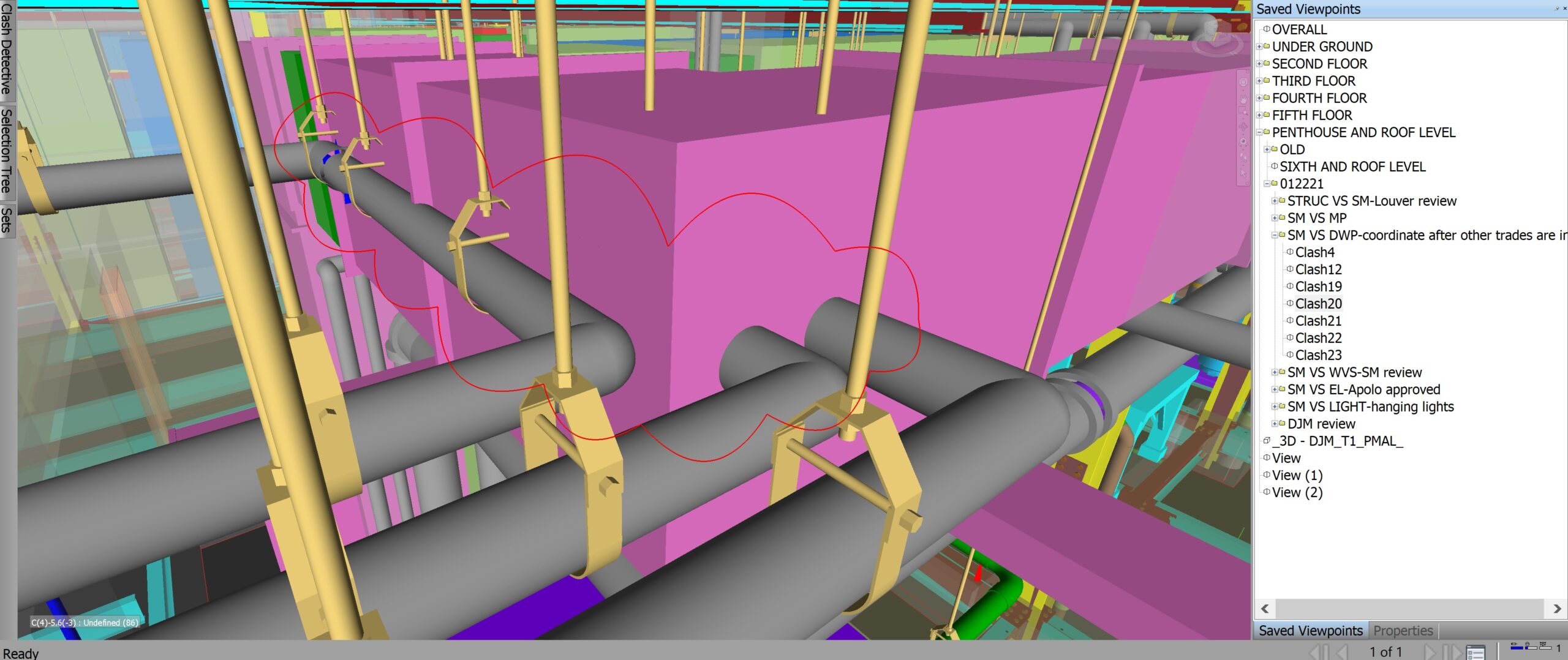What Is BIM Coordination (And How to Improve)
Although BIM coordination plays a huge role in improving construction, it needs to be done correctly to make a difference on your project. Long coordination meetings and messy clash reports mean you aren’t using BIM to its fullest potential.
So, what is BIM coordination and how can you improve it to save money on your next project?
Below, we define BIM coordination and give you tips for improving it—including when to start it, who should be responsible for it, and how to avoid its pitfalls. Plus, learn how BIM coordination can help you eliminate rework, reduce costs, and streamline collaboration.
What Is BIM Coordination?
What is BIM coordination and how is it executed? BIM coordination is the process of bringing together BIM models across disciplines and resolving any conflicts that occur between them. If ductwork crosses electrical wires, for example, a BIM coordinator will use clash detection to identify the issue and review solutions with the coordination team.
Other responsibilities of a BIM coordinator include: verifying that the information in the contract drawings is modeled correctly, coordinating with trades to resolve conflicts, and running coordination meetings.
Want to learn how BIM benefits construction projects? Read our latest blog.
When Should You Start BIM Coordination?
BIM coordination starts early, during the preconstruction process. Why is this? By starting coordination before construction begins, a coordinator can fix issues in the model before they happen on the jobsite. This prevents rework and cost overruns downstream.
Depending on the contract type your project is under, BIM coordination may start at different times. For example, under design build, coordination will take place during the design phase. In contrast, projects under design bid build contracts start the coordination process after teams create contract drawings and produce RFIs. Common contract types include:
- Construction Management at Risk (CMAR)
- Design Build
- Design Bid Build
- Hard Bid
- Integrated Project Delivery (IPD)

Who’s Responsible for BIM Coordination?
So, which party handles BIM coordination? Should coordination fall to individual contractors or a BIM specialist?
Although you can push coordination onto individual contractors, this approach is expensive. Contractors often prioritize their interests over those of the project, resulting in delays and cost overruns. This also leaves general contractors in charge of enforcing the schedule, requiring additional labor.
By using a BIM specialist like DJM, you maintain control over costs and scheduling, keeping your project running smoothly. A BIM specialist also enforces the schedule, ensuring contractors post their files on time and attend coordination meetings. This helps you meet your project goals while avoiding cost overruns and prolonged coordination cycles.
What Are the Challenges to Successful BIM Coordination?
The biggest challenge to BIM coordination is inefficient workflows. Many teams approach BIM coordination the same way they do 2D coordination—holding drawn-out coordination meetings to review every clash. This ties up team members, increasing response times for project-related issues.
How can you avoid these problems and improve coordination? One solution is to bring in experts, like DJM, who can streamline BIM coordination to keep your project on-time and under budget. Learn how DJM can optimize your next project here.
How General Contractors Benefit From BIM Coordination
There are a number of benefits BIM coordination provides general contractors. From reduced costs to increased productivity levels, these are a few of the major benefits:
Seamless Communication
When performed correctly, BIM coordination enables better communication between project teams. This is because models are shared over the cloud, making them easy for project participants to access from any location, whether they’re based in the field or the office. Teams no longer have to meet in-person to review clashes—instead, BIM allows them to coordinate virtually, minimizing travel time and expenses.

Reduced Costs and Rework
BIM coordination is an essential part of preconstruction—ensuring designs can be constructed with minimal errors. With the use of automated clash detection, a BIM coordinator can identify and resolve clashes in the model before they cause problems in the field.
This is more cost-effective than other methods, as fixing errors in the model is cheaper than addressing them once installation begins. By using BIM coordination to identify clashes before construction begins, you can keep your project on track and under budget.

Better Project Outcomes
Construction projects often need extensive coordination. Compared with other approaches, BIM coordination is seamless—you can use automatic clash detection to detect issues and avoid manually sorting through clashes. BIM coordination also cuts down on project errors, preventing rework and keeping the project on schedule and budget.
Ready to Get Started with BIM Coordination?
Delivering quality projects on-time and under budget is difficult. BIM coordination helps, eliminating errors before they cause problems on your jobsite.
The BIM experts at DJM can streamline your coordination process—helping you improve productivity, eliminate rework and reduce costs. Get a free quote today.



